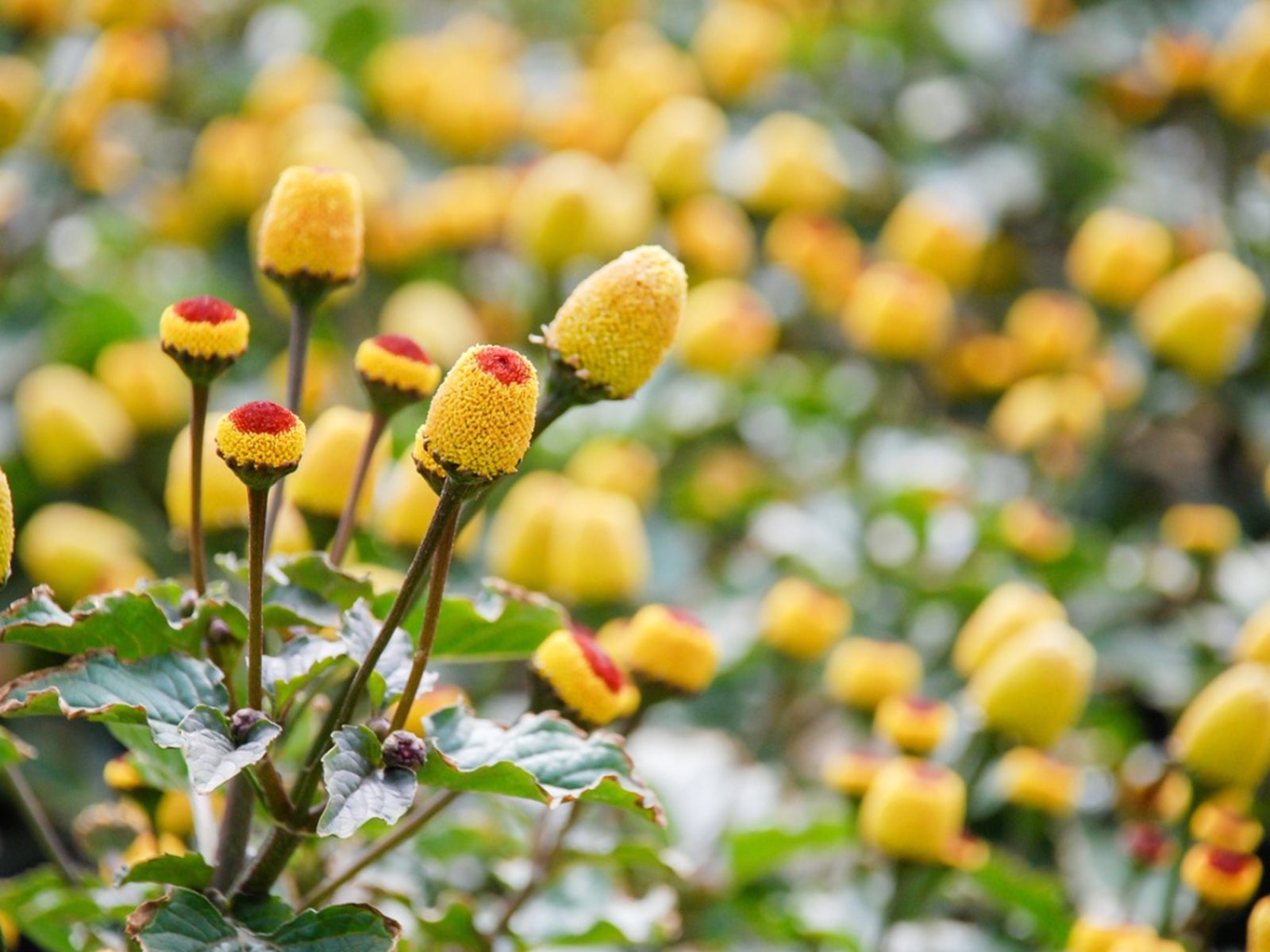Spilanthes Herb Care: How To Grow Spilanthes Toothache Plant

Spilanthes toothache plant is a lesser-known flowering annual native to the tropics. Known technically as either Spilanthes oleracea or Acmella oleracea, its whimsical common name is garnered from the antiseptic properties of the Spilanthes toothache plant.
About Spilanthes
The toothache plant is also known as the eyeball plant and peek-a-boo plant in reference to its alien-looking flowers. Resembling something akin to a daisy at first, upon closer inspection the blooms of Spilanthes toothache plant are shaped like yellow 1-inch (2.5 cm.) olives with a shocking deep red center -- very much like those of a large mammal. Toothache plant is a member of the Asteraceae family, which includes asters, daisies, and cornflowers but with a truly unique flower and memorable numbing effect when ingested. Spilanthes plantings bloom from mid-June through September and are wonderful additions to border gardens, as accent plants or container vegetation with their bronze-hued foliage and eye-popping blooms. Growing only about 12 to 15 inches (30.5-38 cm.) tall and 18 inches (45.5 cm.) across, Spilanthes plantings complement other plants with yellow and red blooms or even foliage such as coleus varietals.
How to Grow Spilanthes
Spilanthes toothache plant is generally propagated via seed and is suitable for cultivation in USDA zones 9 to 11. The toothache plant is quite easy to grow and is resistant to disease, insects, and even our rabbit friends. So, how to grow spilanthes is as simple as sowing in full sun to partial shade 10 to 12 inches (25.5-305 cm.) apart. Keep the soil moderately moist as the plant dislikes saturated or boggy ground and stem rot or general poor growth is likely.
Spilanthes Herb Care
Spilanthes herb care is straightforward as long as overwatering is avoided, and spring and summer temperatures are adequate. Spilanthes toothache plant is native to tropical climes, so it does not respond well to cold temperatures and is not tolerant of frost.
Uses for Spilanthes Herb
Spilanthes is an herb used in folk medicine throughout India. Of primary medicinal use are the roots and flowers of toothache plant. Chewing on the blooms of the toothache plant causes a local anesthetic effect and has been used to temporarily ease the pain of, yes, you guessed it -- toothaches. Spilanthes flowers have also been utilized as a urinary antiseptic and even as a treatment for malaria by the indigenous people of the tropics. The active ingredient in Spilanthes is called Spilanthol. Spilanthol is an antiseptic alkaloid found throughout the entire plant but with the greatest amounts located in the flowers.
Sign up for the Gardening Know How newsletter today and receive a free copy of our e-book "How to Grow Delicious Tomatoes".

Amy Grant has been gardening for 30 years and writing for 15. A professional chef and caterer, Amy's area of expertise is culinary gardening.
